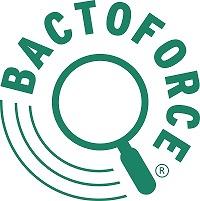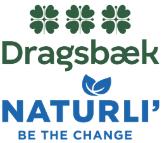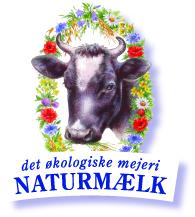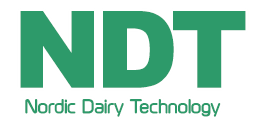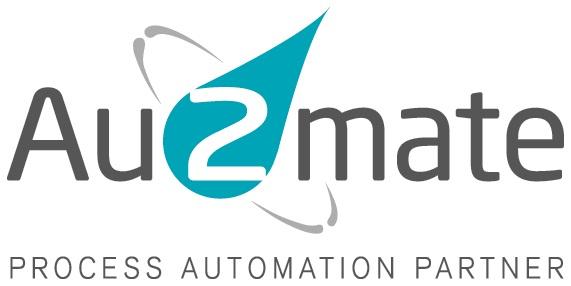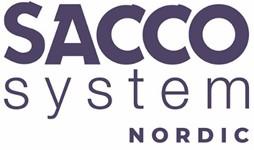
Membranfiltrering anvendes i større eller mindre udstrækning på stort set alle mejerier. Formålet med anvendelse kan være alt fra lavpraktisk opkoncentrering af valle eller mælk forud for transport, til spildevandsbehandling og så naturligvis som et led i produktionen af mange forskellige mejeriprodukter. Kravene til filtreringen varierer som følge af de mangeartede formål rigtigt meget. Hvad skal filtreres fra? - Hvor lange er procestiderne? - Hvilke temperaturer arbejdes der ved? - Hvordan kan der rengøres? Med andre ord – så skræddersyes designet og set-up’et til den specifikke opgave. Seminaret vil give deltagerne en større viden om membranfiltreringsteknologien, forståelsen for teknologien, anvendelse af filtrering i forskellige applikationer og sammenhænge i mejeriindustrien, forhold omkring drift, rengøring og økonomi samt et kig ind i fremtidens muligheder for anvendelse af filtreringsteknologier.
Pris
Kr. 2.195,- + moms for medlemmer af Danmarks Mejeritekniske Selskab.
Kr. 2.695,- + moms for ikke-medlemmer

Membrane Filtration in Arla Foods
Since its foundation Denmark Protein – the biggest whey processing plant in Arla Foods – has been utilizing membrane filtration as its cornerstone technology. Today membrane filtration is still "the go" to technology when developing new products and processes, making membrane filtration technology one of the keys to success. The speech will provide an overview of where and how membrane filtration is used across Arla Foods; from Microfiltration for microbial control to RO for reuse of water. As well as taking a look at what some of the challenges coming up for membranes, in whey processing, will be in the future.

Concentrated Fermented Dairy Products
The presentation describes the concept of fermented dairy products concentrated by membrane filtration. This product category contains many denominations, like Greek yoghurt, skyr, quark, labneh, fromage frais, Petit-Suisse etc. Overall this is one of the fastest growing product categories within dairy. The technology of concentrating fermented dairy products gives producers the opportunity to vary the characteristics and composition of products offered to consumers. Thus – different product values can be communicated and different consumer groups or consumption occasions can be targeted. Based on the market demands for both indulgence and health, we will explain the advantages of using membrane filtration technology for this type of products and compare with different traditional methods. We will compare the different membrane types and their respective impact on i.a. viscosity of the product, flexibility and total costs of ownership. The presentation will also include a step-by-step process description pointing out the important parameters and critical points, both up-stream and down-stream, in the process line.

Fractionation of milk proteins by means of membrane filtration. Methods and applications
The dairy industry is continuously developing methods to fractionate milk into higher value ingredients. Fractionation of skim milk into native whey and micellar casein, whey protein isolates and oligosaccharide from monosaccharide are examples where membrane technology offers the process engineer a scalable and cost effective tool. The right selection of membrane, module and molecular weight cut off point are important considerations in order to optimize the fractionation of milk compounds. Although the correct selection of the membrane is the first step to designing a successful process, operating parameters need to be managed correctly in order to have the correct fractionation impact. Transmembrane pressure, temperature, crossflow velocities and equal distribution of flows to all modules are important parameters the system design needs to consider. For native whey fractionation with mircofiltration the critical parameter to manage is transmembrane pressure. For fractionation of oligosaccharides system pressure and total dry matter are important parameters to control. Good membrane system design attempts to take into account the critical operating parameters for a specific fractionation process and design for them.

Cleaning of membranes: a special challenge requiring special solutions
Dairy proteins have nutritional and functional advantages compared to other protein sources and demand is driven by the need for recombined products, fortification, and nutrition for infants and sensitive groups. Therefore whey powders are a major dairy ingredient today where membrane filtration processes are essential in the production of these. The need for ensuring growing food safety concerns and meeting operational efficiency demands calls for a new approach to membrane cleaning. Ultrasil MembraneCARE 2.0 is a proprietary CIP membrane cleaning program designed for dairy manufacturers producing premium-quality products, that expertly combines alkaline, acid and patent-pending enzyme cleaners and setting new standards for performance.

Overall introduction to the technology and to applications within the food industry
In the last three decades, membrane processes have become a standard and key separation process in the food industry. The most established membrane processes in the industry are the pressure-driven membrane processes microfiltration, ultrafiltration, nanofiltration and reverse osmosis. The main users of membranes in the food industry are the dairy industry (milk, whey, cheese, etc.) followed by the beverage industry (beer, fruit juices, and wine, etc.) and the protein industry (egg, gelatine, animal blood, soya protein etc.). This presentation will provide an overview on membrane applications in the various sectors of the food industry. The challenges of membrane processes in the food industry such as fouling and cleaning will be discussed and finally, outlook on future membrane processes and applications in the food industry will be provided.

Examples of crossflow MF solutions for dairy industry
This presentation will review three applications in the dairy industry: 1) Bacteria removal, 2) Milk, fractionation and 3) Cheese brine purification and recycling. Back in the 80’s ceramic MF membranes started to be used for bacteria removal from skim milk thus significantly improving the quality and shelf life of pasteurized milk. In the 90’s the crossflow system design was simplified with the introduction of GP membranes and further optimizations of membrane pores size and structure allowed setting new standards for the production of ESL milk. At the boundary between MF and UF, other GP membranes are used for milk fractionation. In that case, skim milk is split into a native casein rich fraction and “ideal whey” further processed to make WPI or other ingredients. Hollow Fibers based crossflow systems purify and recycle cheese brine. They efficiently remove suspended solids and microbial load out of the brine solution to stabilize its quality and dramatically reduce the frequency of periodic bath dumping into sewage.

Challenges in the Dairy Industry: Perspective on extreme performance membranes
Ever since the development of (spiralwound) polymeric membranes – with better performance characteristics and increasing quality – the use of such membranes has become very much more widespread in the Dairy Industry. Becoming a bulk commodity, polymeric (spiralwound) membranes has contributed to better quality products and savings in processing compared to eg. ceramic and hollow fiber membranes. Today the demands for quality, safety in products and savings in utility consumption sets further demands to processing and hence membranes being the key component in many applications. We shall look into some of the present extreme applications and what they call for in terms of membranes; finally with an outlook to see what the future demands of new types of membranes.

Hollow Plate Filtration – A truly new solution in Membrane Filtration
Introducing Hollow Plate filtration elements and systems, disruptive new solutions for sanitary MF and UF applications in dairy.
Hollow Plate membrane filters allow free flow over a flat membrane surface, allowing a unique and highly sanitary solution, which at the same time significantly reduces energy consumption compared to traditional membrane cross flow filtration. The membrane filter systems operate with a very uniform trans-membrane pressure and this allows for new end-products. The systems are fully drainable and can be cleaned quickly, with reduced use of water and chemicals. In addition to the presentation of the Hollow Plate technology, a demo model will be set up at the seminar, so it is possible to see a lab scale unit in operation.

Innovative troubleshooting tool for membrane systems
This presentation explains how the Tetra Pak Membrane Scope offers innovation in membrane filtration leak detection. The equipment and technology is a new generation tool for trouble shooting on filtration Plants. Using a waterproof recording video inspection camera and a 20-meter long probe to visually identify the source of failure, the patented technology provides visual confirmation of the source of leaks. Traditionally it has been a labour and time intensive process to find and replace faulty membranes and ship back to suppliers for warranty claims etc. With the Tetra Pak Membrane scope, a process that could take many hours and involve lots of heavy manual work, can be accomplished in 10-15 minutes.




